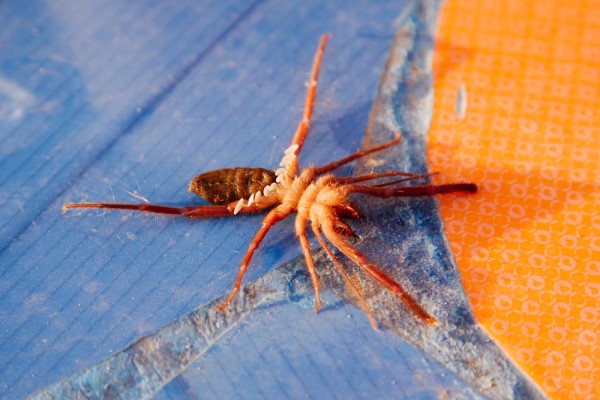If you’ve ever asked yourself “What has 10 legs and doesn’t exist anymore,” you’re not alone. Many other creatures share that trait. Xenopus, Lobsters, and Decapods all have claws on modified front legs. But how do you know whether it exists anymore? Keep reading to find out more! And don’t forget to check out the article below!
Lobsters have claws on modified front legs
Many people don’t realize that lobsters have ten legs. This is surprising given that most creatures have only two. Dogs and cats have four legs, while spiders have eight. One new blog focuses on educating people about the differences between lobsters and other animals, pointing out anatomical mistakes we all make every day. For instance, the Red Lobster logo contains incorrect lobster anatomy.
Although the claws on lobsters’ front legs are used for walking, they are mostly used for feeding. In addition to walking, the lobster also has a modified front leg with claws. These legs are located in matched pairs along the side of the body. These legs regenerate much faster than their claw-equipped front legs, making them a desirable addition to your lobster collection.
While lobsters are able to regrow their limbs, their antennae are unable to. While they are important for fighting, they don’t have large enough claws to fight until their second molt. If you’re planning to give a lobster a gift, it might be best to give it a lobster. The shell is also very important for the lobster’s survival.
Decapods have claws on modified front legs
The term “decapod” refers to any animal with ten legs, five of which are modified into claws. Decapods have a carapace covering their head and thorax. They also have modified front legs called maxillipeds. The third maxilliped resembles a shortened pereopod, and their first walking legs lie just behind the third.
The term “decapod” comes from Greek and means “ten legs”. The term is used to describe more than eight thousand species of crustaceans, including shrimp, lobster, crayfish, crabs, and hermit crabs. Decapods are a diverse group with a wide range of ecological roles and habitats. These animals have developed claws on their front legs and modified their front legs to move about.
Some decapods have asymmetrical claws for various purposes. These claws allow predators to use two tools for subduing prey. A pistol shrimp’s large claw can kill or stun prey, but its secondary function is to transport the prey into the mouth. Many other decapods have no claws or only one. These animals are scavengers, but their body plans allow them to specialize in feeding or claw structure.
Most decapods communicate with one another by visual and auditory signals. Typically, these signals are made by rubbing parts of the body together. Aquatic species also use pheromone communication. They release pheromones through their antennal glands. A crayfish, for instance, will blow its urine-laden urine into its opponent’s mouth.
Xenopus has claws on modified front legs
Xenopus has modified front legs and claws on its hind feet. They have a flat body and spotted or solid yellow dorsal surface, a large fifth toe, and modified front legs. They are entirely aquatic and rarely leave the water. They can travel up to 2 kilometers between locations. Their legs are strong enough to tear apart prey, which they eat either live or dead. They are popular pets for many reasons, including their cute appearance.
The Xenopus has an eye on top of its head and is constantly scanning for food. The eyes on the top of its head enable it to scavenge for food and see it fall from the sky. Moreover, a lateral line system runs through the length of its body, enabling it to sense movement. Its modified front legs help it to swim in the water, and these two features make it an attractive companion for scientists.
The Xenopus embryos grow externally in a salt solution, and in the first few days, they develop into transparent tadpoles. Unlike most other species, the Xenopus embryo is large and easily manipulable and is useful for genetic and developmental studies. Its genes are easier to study because it is tetraploid. It takes one to two years to reach sexual maturity, and it is highly flexible, making it a suitable genetic model.
What has 10 legs and doesn’t exist anymore answer
There are so many misconceptions about what has 10 legs and doesn’t exist anymore. This article will explore the myth and highlight why pets need insurance. Please consider all this.
Insurance is very important for our pets. But it’s also important for us. When our pet is sick, injured or has a broken bone, we want to be able to afford them the best possible care. This is especially true if the pet was part of our family. You love your animal and want the best for them, but sometimes you can’t help but pay for the vet bills. Insuring them helps defray those costs.
The second misconception is that because they are an animal, the insurance company will allow them to get any treatment they need. This isn’t always the case. While animal owners are most likely to get the full benefit of their insurance policy, this isn’t always the case. Some companies require written documentation such as a description of the treatment the animal received, the diagnosis and outcome, and other factors.
And finally, most people have the impression that since they own dogs or cats, they can choose whatever pet medical plan they like. This is not the case. Only certain types of pets – large dogs, for example, are eligible for specific pet health plans.
What has 10 legs and doesn’t exist anymore is confusing. So many people think it refers to a certain breed of dog, but it’s not. So many people think it refers to animals with a broken leg, but it’s not. So many people think it refers to animal owners who can get whatever treatment they want for their pets without providing proof of the plan’s validity, and it’s not.
So, what has 10 legs and doesn’t exist anymore? You’ll have to read between the lines when you’re reading an insurance policy like this one. The term refers to leg problems, but a leg problem refers to something that’s wrong with a leg. The idea that there is a link between having bad legs and a bad prognosis is also problematic. So don’t get misled. If you’re dealing with a policy like this, make sure you know what it’s talking about.
What has 10 legs and doesn’t exist anymore can refer to different things. If a pet owner is using the word “legs” to describe the problem, he or she may be talking about hip dysplasia. Hip dysplasia is a condition where one or more of the vertebrae isn’t growing properly. It can affect any of the animals in the family, but it’s most common to dogs and cats. So, if a dog or cat has been diagnosed with this disorder, the pet insurance company won’t pay for any treatment unless it’s considered curable.
The next question to ask yourself when reading an insurance policy like this one is “What does ‘dies’ mean?” If your pet is suffering from an advanced stage of cancer, the insurance company won’t cover the costs of treatment because it’s considered a terminal. Just keep in mind that the term “dies” often refers to the actual death of an animal, so the coverage wouldn’t extend to euthanasia.
In addition, chemotherapy treatments are also usually only covered for animals once they’ve been “treated,” so even if a dog or cat is “treated” with chemotherapy, it may not be covered if the chemotherapy has progressed to the point that death is imminent. So, before asking “what has 10 legs and doesn’t exist anymore,” you should ask your vet for a quote on what types of veterinary fees the treatment will cost.

